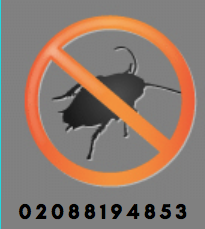Feral pigeons have always been a nuisance in many towns and cities. The borough of Kensington and Chelsea in London is no exception. But in the last couple of years it seems that feral pigeons are on the rise. There are a number of reasons of why this may be, the recession being one of them. During times of a recession, Kensington has seen a number of businesses close down, therefore leaving properties vacant. With all these premises being left empty, they have become ideal nesting sites if they are not boarded up correctly and supervised regularly. Unlike the Wood Pigeon, that nests in trees and is no relation, the feral pigeon will almost exclusively nest on and inside buildings and at height.
With the rise of the feral pigeon population also come the rise in associated problems. The build up of excrement that can be found around nesting sites, can become infested with mites and insects. These are pests that can infect stored products like flours, and also houses. They include: Varied Carpet Beetle, Fur Beetle, Larder Beetle, Biscuit Beetle, Clothes Moth, Brown House Moth, Cheese Mite, Flour Mite, Common Bird Mite and Pigeon Tick. These mites and insects can carry many diseases and can give rise to the following: Chlamydosis, Salmonellas and can cause extreme breathing difficulties for asthma sufferers.
Then there are the problems to properties. Blocked gutters and down pipes can cause water damage by seepage coming into the property. Chimneys can become blocked by nests, causing smoke problems. Gasses such as carbon monoxide may be forced back into the house causing carbon monoxide poisoning. All of These problems can lead to increased costs of maintenance and the risk of being a nuisance to neighbouring properties. Large numbers of roosting pigeons also give rise to odour and noise complaints. Then there is the risk of general health and safety in terms of slipping hazards on pavements and fire escapes, from the accumulations of droppings.
There are ways to alleviate the problem. The most effective way of reducing feral pigeon populations can be achieved by simply restricting the supply of food available to them. Quite simply, don’t put out any rubbish until the day of collection, stop throwing bread or bird seed out for the birds (this will attract rats as well) and discard your lunchtime snack packaging in to a bin. Some cities have deliberately established favourable nesting places for pigeons. These are nesting places that can easily be accessed by council workers, who regularly remove eggs, thereby limiting the reproductive success of pigeons. Pigeon populations may also be reduced by bird control systems that successfully reduce nesting sites. Peregrine falcons are a popular choice of bird for pest control companies. Some cities are actively introducing breeding programmes of peregrine falcons as they are a natural deterrent of pigeons.

